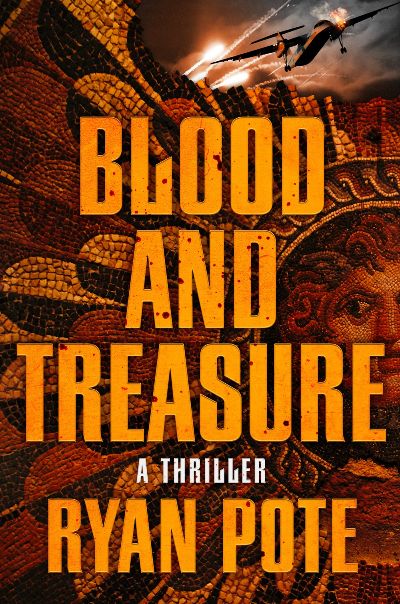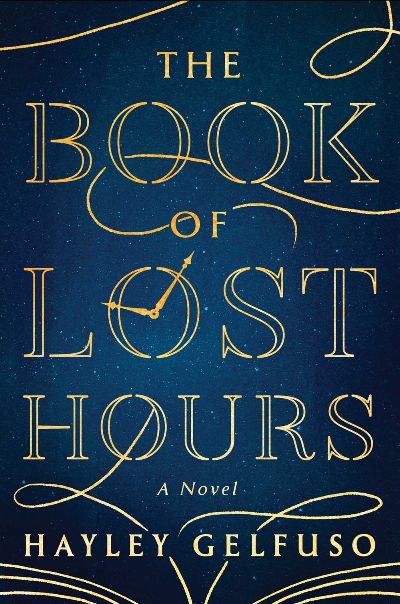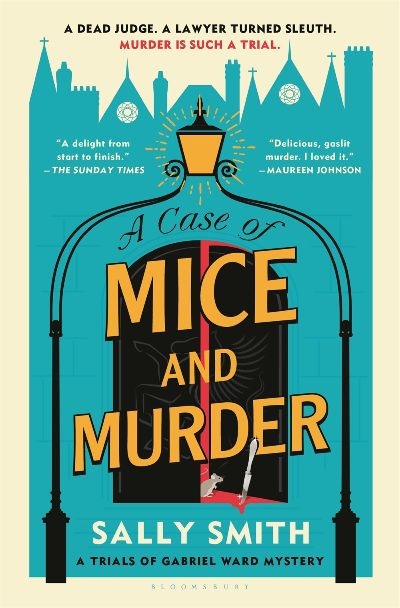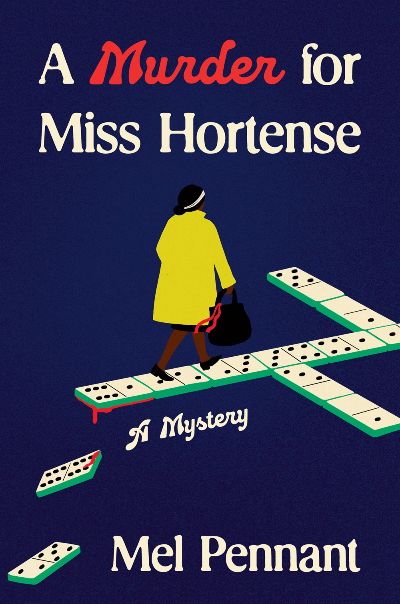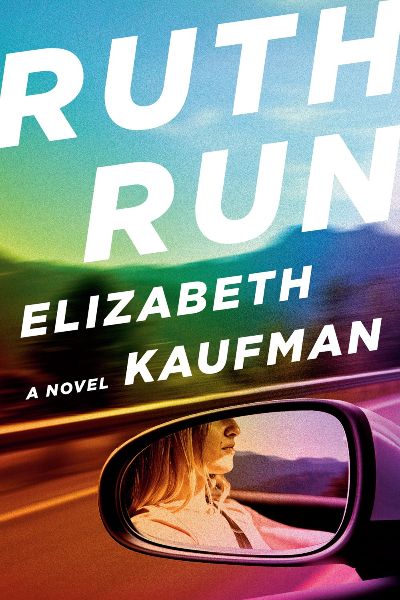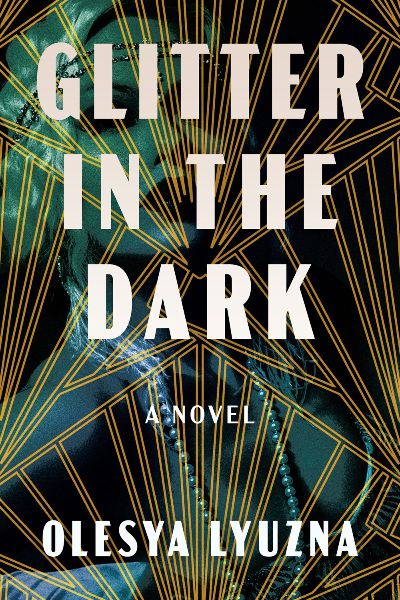Oak Hill, NC is a town where nothing much in the way of crime happens. Then, in the space of a few days, there is murder, robbery, and arson. Jacob Sawyer, someone who hasn’t been seen for 15 years, is back in town, though no one thinks he is the cause. Grace Bingham, local police detective and Jacob’s abandoned love interest from before, is under time pressure to solve the crimes without offending anyone important. Jacob’s back because his mother, beloved in the town, is dying of cancer; Calvin Dockery, an extremely wealthy local who pulls all the strings, is also dying. The current crimes harken to unexplained events of the past that caused Jacob to leave. The story moves from the present to the past and back again, gradually revealing what happened. Grace and Jacob are undeterred in their search to connect what is happening now with what happened in the past regardless of who is involved. Money is power, and power is very dangerous here, and those with it are willing to spare no one. Resolution is not easy, but very satisfying in a book with a great deal of atmosphere and local resonance.
Debut
Pote’s debut thriller mixes the best of Clive Cussler, Tom Clancy, and Dan Brown to weave an unputdownable tale. An incident on the International Space Station leads to more questions than answers and appears to be a prelude to gaining access to a satellite and its tech. Ethan Cain and his team take on big-pocket clients to find hidden treasures and artifacts. Their current client initially had them track down a scroll, and the information revealed on it leads to the location of an ancient weapon hidden for centuries. Evil people and entire governments want to utilize its capabilities, and whoever has this weapon could change the world. Cain learns the coordinates for this device’s underwater hidden location, but when trying to recover it, he watches as a space capsule slams into the water close to them. Inside is an unconscious woman, ejected from the event that occurred onboard the International Space Station. How did she survive, and does she also have an ulterior motive? Pote’s writing captures what makes fans of action-adventure and historical conspiracy thriller writers like Brad Thor and Steve Berry deliver every book. Make this a mandatory addition to your reading pile; you will treasure it forever.
In 1938, to hide her from the Nazis, a German watchmaker places his 11-year-old daughter in a library balanced between space and time, where the books on the shelves are memories, and promises to return. Lisavet grows up in this world between worlds, and as she grows, she becomes the leader of a movement to stop some of the timekeepers who browse the shelves from burning pages out of the books. In Boston in 1965, a young woman named Amelia is approached by the director of a highly secretive CIA program. Amelia has a watch that can access the library, and the director, Moira, wants her to find a particular book of memories. With no choice, Amelia begins her search, not realizing that success will destroy everything she loves. The story is elegantly poetic, with hints of romance and science fiction mixed with the thriller elements. The time references and how everything operates can be complicated, but it doesn’t matter because the characters and the writing carry the reader on a fantastic journey. What are memories? Can love transcend time? This tremendous debut from Gelfuso reminds us that we write in the book of memories every day of our lives.
Attention anglophiles, lovers of dazzling historical fiction, and fans of a good draught of droll humor. This book is for you. Set in the Inner Temple, the heart of legal London for centuries, with its own degree of independence (not unlike the Vatican), the novel features Gabriel Ward KC, a brilliant legal mind who moves each day at the same measured pace between his chambers, which are crammed with books on nearly all topics; his office; and the dining hall. But on May 21, 1901, he emerges from his room only to discover a body on his doorstep. In fact, Ward is quick to identify it as the corpse of the Lord Chief Justice, who now has a Temple carving knife in his chest. But what is even more shocking isn’t that he is clad in evening wear, but that his feet are bare. How delicious is this plot? Appointed by the Temple’s Treasurer to investigate the murderer, Ward is paired with the eager and charming young Constable Wright, whose street knowledge turns out to be quite an asset, gaining Ward’s respect. The investigation drags the pair from the upper classes to the homeless, with an entirely separate court case—in children’s publishing, no less—providing some entertainment of its own. Quite simply, this is one of the very best debuts I’ve read in a long time; it’s sure to delight the Osman and Thorogood crews and readers of Sarah Caldwell’s legal murder mysteries as well.
If you’re hankering for bulla cake, coco fritters, gizadas, or other Caribbean foods, Miss Hortense has you covered, with recipes for those dishes and more provided throughout this introduction to the steely “pardner lady.” Readers can learn the ins and outs of the pardner while meeting Hortense’s frenemies and neighbors—who are mostly one and the same—in millennium London and flashbacks to the city in the 1960s, but the basic premise is that it’s the kind of money club often used by those who are unbanked. English banks won’t let Hortense and other members of her Black community have accounts, so the pardner sees them each contribute money every week, with members taking turns to get the whole pot. Over the years, the club has allowed its contributors to “become the person they wrote back home and boasted that they were.” But now all the funds have disappeared at the same time that there are several deaths in the community. Even the supposedly natural demises get Hortense thinking, but some of the deaths bear the hallmarks of attacks that happened years ago, when a man the community called the brute beat several women to death and left biblical messages with their bodies. Is he back? Hortense and the other pardner members will have to do their “Looking into Bones,” which is what they call their investigations. These have the habit of “creating more dots than perhaps connections,” but allow readers to explore a tangle of love, loathing, and buried secrets that leads to a delightful Christie-like ending in which fingers are pointed and confessions made. Zadie Smith fans should pick up this winner.
Ruth has an unconventional way of making money, and her method of robbing banks through a code in a hacked chip has finally caught up with her in Kaufman’s debut thriller. Taking cash in small amounts from transactions has made her a very rich cybercriminal. When alarms signal she’s been discovered, she grabs her accomplice, and they take off. A government agent named Mike has been watching her for some time and knows everything about Ruth since he feels he launched her career. Mike has planted tracking devices in her home, car, and a bag that never leaves her side, so he knows her every move. When his superiors want her eliminated since her bug is inside the government’s network, Mike agrees to help. However, he seems to have feelings for the woman he considers his protégé, so what is his objective? When Ruth realizes that the authorities are close and her usual tricks won’t be enough, she must improvise. But even though she is elusive and clever, her methods might put her in even more danger than she’s in from the law. Kaufman has created a compelling and complex character in Ruth, and watching her outwit and coordinate her surroundings to stay alive while being in control will endear her to readers. The motivations behind the people after this protagonist, and her inability to trust those she enlists for help, keep the paranoia above a level ten. Hopefully this terrific debut will launch a series featuring Ruth and her adventures.
Sabine Kelly has been on the run for years. As a teen she was accused of arson that killed nine people, including her mother and sister. The Sabine whom readers meet seems hardened by her years on the road—or rather, on the river, hiding as she does in a houseboat on the same rural Australia waterway she grew up by, with her drug-addicted mother and a sister she had to parent. But she doesn’t seem capable of the crime she’s running from. Instead, she seems scarred by it and desperate for the truth to come out, but powerless to make that happen. Enter Rachel Weidermann, a journalist who lives next to Sabine’s grandfather, a complicated character called Pop. She’s been obsessed for years with getting Sabine’s story, and when she sees the fugitive visiting Pop, she is excited to both get answers and save her fading career. Following the women, as Sabine learns to trust someone and Rachel to let things unfold imprecisely, offers both an engrossing journalism procedural tale and a look at what can happen when goodness meets desperation. Setting is as prominent as characterization and plot here, with all combining to create a memorable tale of redemption.
We are taken back to the roaring ’20s, to speakeasys and the Ziegfeld Follies, in this gritty noir with Ginny Dugan as our main character and sleuth. She and her dancer sister have come to New York from Kansas. Dottie, the sister, dances for the Follies, and is engaged to Charlie, a financial guy from home; Ginny writes an advice column for Photoplay, though keeps angling for real, hard-nosed reporting. Ginny is out partying at a speakeasy when she’s a witness to the kidnapping of Josephine, a headliner who is Black, but her story is not believed. People are dying of heart attacks in Harlem dance clubs, and dancers are reporting ghosts in the dressing rooms of the Follies, young women who have been murdered. There are drug stashes and secret crime bosses. Ginny partners with Jack, a detective, but it is Gloria, a Follies star, who calls to her heart. The level and complexity of the crime speaks to a mastermind: the Eagle, whose identity is unknown until the end. This debut turns back the clock with authentic detail and sharply drawn characters and a strong sense of violence and lawlessness. A challenging book.
Eight months after a traumatic on-the-job accident almost killed her, George (Georgina) Lennox has been assigned her first case as a newly promoted Glasgow DI: to investigate the suicide of 18-year-old Alan Ferguson on a remote island in the Scottish Hebrides. A disappointed George protests to her boss: “Because nothing happens out there. These islands are medieval time capsules with a population of relics.” Arriving on the stark and barren Eilean Eadar with her partner, Richie Stewart, she finds an isolated community that still clings to its ancient Catholic faith (in Protestant Scotland) and that is deeply suspicious of outsiders. As George and Richie interview the locals, George senses that something is off about the place and its people. Mysterious double spirals are engraved into the village houses and farm crofts. The long abandoned lighthouse where Alan fell is also the site where three lighthouse keepers disappeared mysteriously a century ago. Late at night, George hears the howling of a wolf and spots a masked figure outside her window. Who is trying to thwart the investigation? At the same time, George and Richie clash over the DI’s use of prescription pain medication and her reckless tendency to charge into risky situations without backup. George is a compelling sleuth, tough yet also vulnerable and not always likable, but she has great chemistry with the fatherly Richie. Debut author McCluskey has written a compellingly spooky and creepy mystery with a hint of folk horror à la The Wicker Man. Fans of Ann Cleeves’s Shetland crime novels and Peter May’s Lewis Trilogy will delight in this atmospheric thriller.
It’s dark. It’s humorous. And everything about it is completely unexpected. Dolores dela Cruz has been on the lookout for a serial killer, and Jake Ripper fits the bill. A temp in her office, Jake is charming, handsome, and in possession of a pair of classic “strangler gloves.” What more can you ask for? Jake, meanwhile, is smitten with his mysterious colleague, from her severe wardrobe to the abuse she occasionally dumps on him. Slowly, the relationship between the two morphs into a morbidly intense but weirdly romantic obsession. The dialogue—a good part of the pleasure this book offers—runs from full-on snark to flirtatious banter. And while there are plenty of those head-swiveling moments suspense readers love, more shocking is the tenderness that grows between the two. Are we dealing with real murderers here, or do some serial killers just want to have a little fun? Weird enough to appeal to a broad swath of crime fiction readers.


